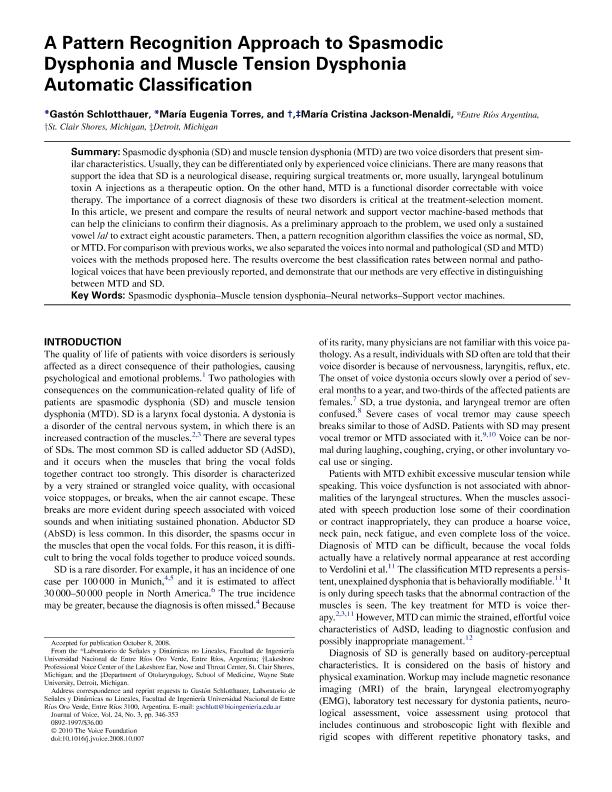Artículo
A Pattern Recognition Approach to Spasmodic Dysphonia and Muscle Tension Dysphonia Automatic Classification
Fecha de publicación:
05/2010
Editorial:
Mosby-Elsevier
Revista:
Journal Of Voice : Official Journal Of The Voice Foundation.
ISSN:
0892-1997
Idioma:
Inglés
Tipo de recurso:
Artículo publicado
Clasificación temática:
Resumen
Spasmodic dysphonia (SD) and muscle tension dysphonia (MTD) are two voice disorders that present similar characteristics. Usually, they can be differentiated only by experienced voice clinicians. There are many reasons that support the idea that SD is a neurological disease, requiring surgical treatments or, more usually, laryngeal botulinum toxin A injections as a therapeutic option. On the other hand, MTD is a functional disorder correctable with voice therapy. The importance of a correct diagnosis of these two disorders is critical at the treatment-selection moment. In this article, we present and compare the results of neural network and support vector machine-based methods that can help the clinicians to confirm their diagnosis. As a preliminary approach to the problem, we used only a sustained vowel /a/ to extract eight acoustic parameters. Then, a pattern recognition algorithm classifies the voice as normal, SD, or MTD. For comparison with previous works, we also separated the voices into normal and pathological (SD and MTD) voices with the methods proposed here. The results overcome the best classification rates between normal and pathological voices that have been previously reported, and demonstrate that our methods are very effective in distinguishing between MTD and SD.
Archivos asociados
Licencia
Identificadores
Colecciones
Articulos(SEDE CENTRAL)
Articulos de SEDE CENTRAL
Articulos de SEDE CENTRAL
Citación
Schlotthauer, Gaston; Torres, Maria Eugenia; Jackson Menaldi, María Cristina; A Pattern Recognition Approach to Spasmodic Dysphonia and Muscle Tension Dysphonia Automatic Classification; Mosby-Elsevier; Journal Of Voice : Official Journal Of The Voice Foundation.; 24; 3; 5-2010; 346-353
Compartir
Altmétricas




